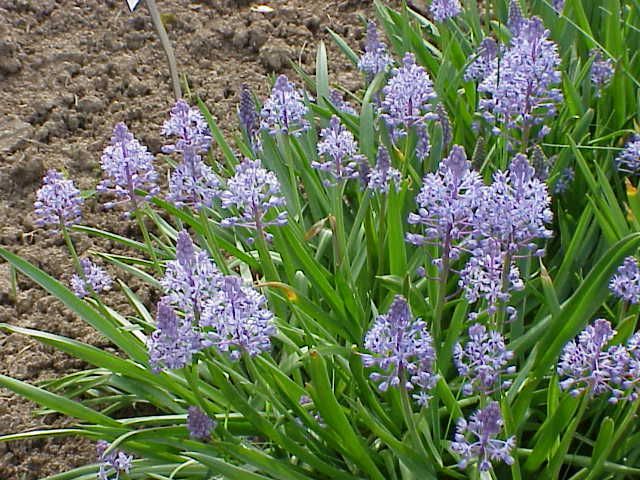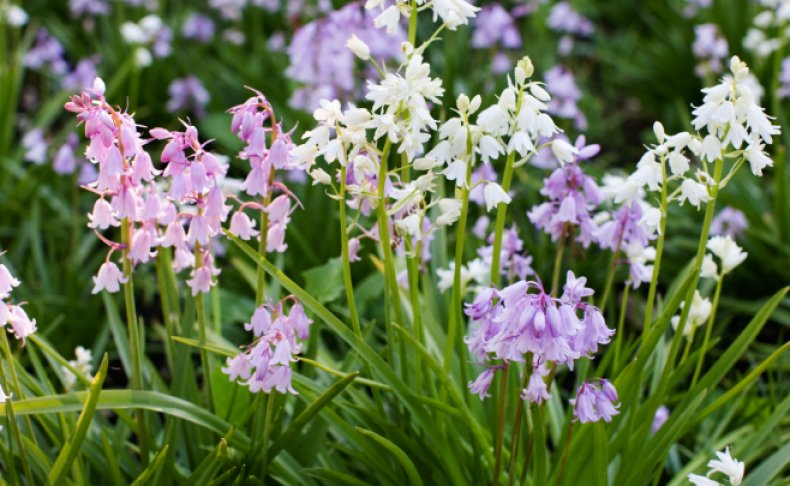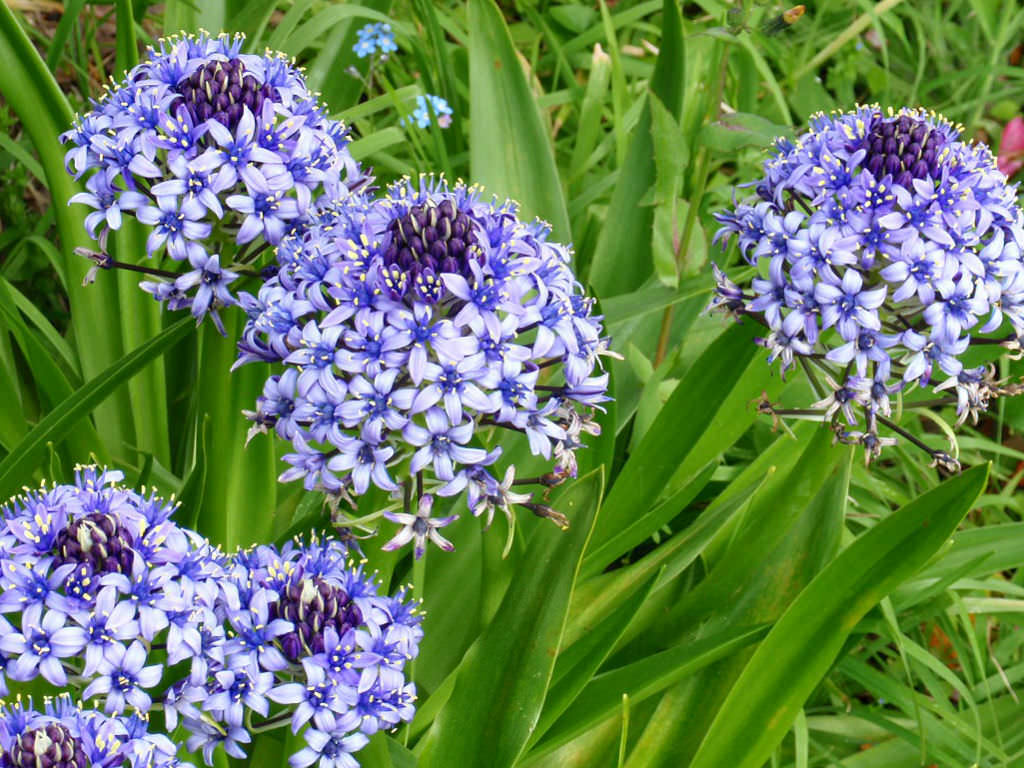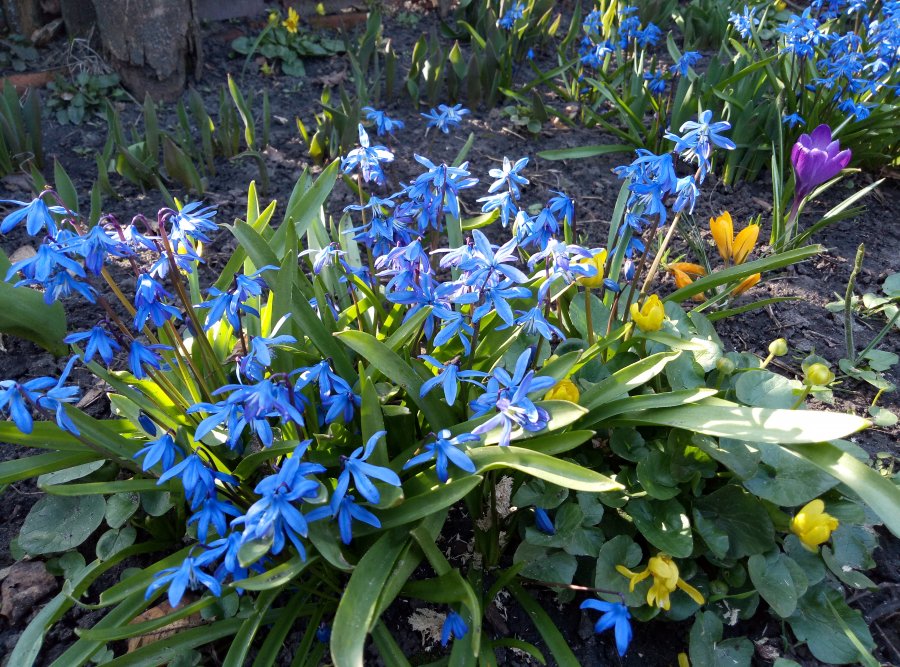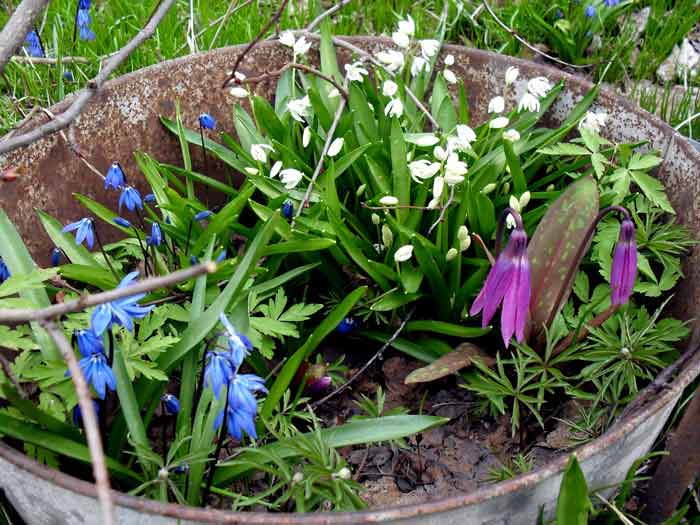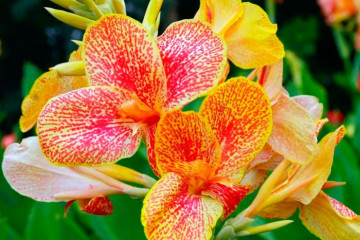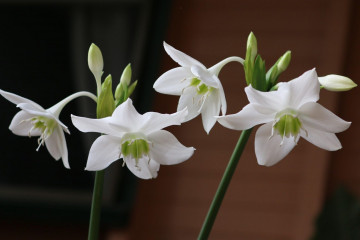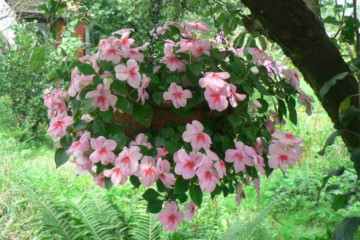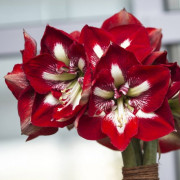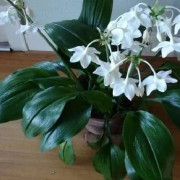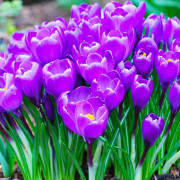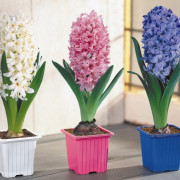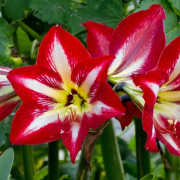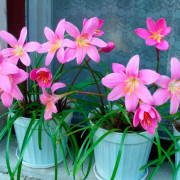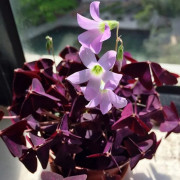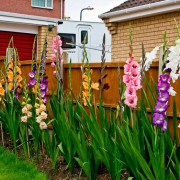Scylla, indoor flower - planting and care
Content:
Scylla is a flower that pleases with its beauty with the onset of the first spring warmth, as soon as the snow melts from the ground. It cannot boast of its large size, but its bright color immediately attracts attention. The plant feels great both in the forest (natural habitat) and in the flower beds of summer residents. It is very popular due to its unpretentiousness and undemanding care.
Description of popular species
Depending on the characteristics, the scilla flower (Scilla luciliae) is subdivided into several types, each of which has its own characteristics not only in external data, but also in the nuances of agricultural technology. It is important to choose the right variety and provide it with proper care in order to admire the flowering of primroses in your flower bed with the first rays of the spring sun.
Scylla siberian
Scylla Siberica owes its name to a mistake by scientists. The plant was grown from seed and it was thought that it originally grew in Siberia. Later it became known that the climate of this region is not suitable for the cultivation of this flower, and the seeds were collected near Volgograd.
Siberian Scylla blooms predominantly in blue.
In Scilla siberica, both leaves and inflorescences are shown from the soil at the same time. It blooms in white or blue. With the onset of spring warmth, the soil is covered with a beautiful carpet of dense forests. Only a snowdrop can compete with them in early blooming. Flowering lasts about 3 weeks.
Attention! A feature of the Siberian Scylla siberica is its sensitivity to sunlight. Its buds bloom strictly at 10 am and close at 5 pm. If the weather is cloudy and rainy outside, the inflorescences may not open at all.
The Scylla Siberian variety Alba deserves special attention. Its snow-white flowers are beautiful both in single plantings and in contrast to the Spring Beauty variety.
Scylla Litardiera
Bulbous plant, which is also popularly called wild hyacinth. You can also find this flower in the classification as a Spanish scilla. It has lanceolate or linear leaves and a conical inflorescence. The height of the scilla is about 25 cm, the color of the flowers is bright blue. The flowering period is late May or early June. Propagated by both seeds and bulbous babies. Perfect for decorating ridges, alpine slides and ordinary flower beds.
Litardiera looks great both on classic flower beds and on alpine slides.
Scylla Mishchenko
The largest known species of woodlands. The flower got its name in honor of the researcher of these plants in the Caucasus. The flowering period occurs in March - April and lasts up to 20 days. The tassel contains 1-4 flowers, mostly white, in rare cases there are blue or pale lilac varieties.
Mishchenko is one of the largest-colored varieties.
Scylla bell-shaped
This scilla is a unique flower, the description of which says that the plant reaches a maximum height of 30 cm. The flowering shoot is formed alone. The color of the flowers can be white, pink or bluish. Outwardly, they resemble bells, collected in small bundles of several pieces. The flowering period occurs in May and lasts about 15 days.
The bell-shaped scylla requires obligatory shelter or digging for the winter.
Attention! For the winter period, this Scylla should be dug up or sheltered for her.
Scylla Rosen
Under natural conditions, the Scylla of the species Rosea grows in the mountain meadows of the Caucasus. The stream is named after the famous diplomat who was the companion of the traveler Koch. The bulb produces one arrow with a single flower, the diameter of which reaches 5 cm. Its color is whitish or light blue. Flowering occurs in early May and lasts about 2 weeks. While in gardens and flower beds, this type of scilla is rare.
Rosen grows primarily in the wild.
Scylla Peruvian
The height of the Scilla peruviana plant does not exceed 30 cm. Several flowering shoots are formed, on which small flowers of a deep blue color are formed. They do not exceed 1 cm in diameter. The inflorescences are dense, cone-shaped. The leaflets are linear, reaching 1.5 cm in width. There are about 5-8 of them on each bush.
The Peruvian scilla forms inflorescences of a rich blue color.
Scylla double-leaved
Scilla bifolia (two-leaved) is also called two-year-old. She is also one of the shortest. The maximum height of the plant does not exceed 15 cm. The plant is distinguished by abundant flowering, has 1 to 3 shoots, on which bunches of very fragrant flowers appear. There are up to 15 of them on each shoot. Their color is white or pink. This scilla has only 2 leaves up to 20 cm long. It is this feature that it owes its name to. The flowering period falls at the end of April and lasts up to 15 days.
The two-leaved Scylla is one of the shortest varieties.
Outdoor planting rules
Growing a scilla does not require a lot of experience and practical skills from the gardener. However, you should adhere to simple rules so that the plant pleases with exuberant flowering and begins to multiply quickly.
Scylla should be planted in a sunny, well-lit place. If this is not possible, then partial shade is suitable (for example, an empty distance between garden trees). The plant has no particular whims regarding the soil; it feels great both on sandstones and loams.
Scylla is planted in well-lit areas.
Attention! An important condition is that the flower does not tolerate swampy areas and high acidity. Preference should be given to organic-rich soil.
Before planting a scilla in open ground, a number of preparatory measures should be taken. In particular, the earth must be carefully dug up and humus or peat must be added to it. In addition, for these plants, it is recommended to add forest soil with foliage and pieces of bark to the soil.
Bulbs are planted on a flower bed in June or early July. Just during this period, the foliage on adult plants is already beginning to die off. For planting, holes are dug up to 7 cm deep, the distance between which is left about 5-10 cm. Your favorite primrose should be planted in them.
Outdoor care
Although Scylla belongs to unpretentious plants that do not require close attention and care, it can only please with lush and beautiful flowering with proper care.
Scylla should be watered only in the morning so that drops of water do not fall on the flowers. Otherwise, they will no longer be so attractive. Irrigation should not be abundant, since the plant does not like wet soil, but slightly damp soil.
Watering the scilla should be moderate.
Before the scilla begins to bloom, top dressing is added to the soil with the content:
- potassium,
- phosphorus,
- nitrogen,
- gland,
- magnesium.
If autumn is chosen for fertilization, then preference should be given to granular. In spring, it is better to use liquid products. Complex preparations are also suitable for Scylla (for example, Nitrofoska). Timely top dressing makes the flowering abundant and long-lasting.Also, after these procedures, the plants tolerate winter better.
After each watering or heavy rainfall, it is recommended to loosen the soil. The loosening depth should not exceed 2.5 cm. Otherwise, the roots will be deficient in oxygen. Also, the necessary procedure is the removal of weeds, which not only consume nutrients from the soil, but also impede air circulation, contribute to the development of fungal diseases, and the spread of pests.
A necessary measure of caring for the scylla is the timely removal of the testes. Otherwise, the plants will occupy a significant area of the flower bed due to self-seeding reproduction.
Attention! Seed boxes ripen approximately at the end of June. You need to trim them before the peel begins to crack.
Redwoods require transplanting once every 3 years. This procedure promotes healthy growth and preservation of the decorative qualities of plants. The scillas are dug up, the children are separated and planted back into the flowerbed. It is best to do this in late September or early October.
Growing as an indoor flower
Frost resistance of some varieties of scilla leaves much to be desired, therefore they are grown as house flowers in indoor conditions. Their distinctive feature is somewhat elongated internodes. In the summer, the flower pot should be hidden from direct sunlight, but remember that the scilla needs good lighting.
Due to the low frost resistance of some varieties, they are grown in room conditions.
In the warm season, the optimal temperature for Scylla is considered to be + 22-25 ° С, from autumn it is gradually lowered so that in winter the plant is kept at + 10-12 ° С. If this figure is higher, then the flower will stretch out strongly. Indoor flower scilla does not require additional spraying and perfectly tolerates dry air. In summer, moderate watering is required, in winter it is reduced to a minimum, however, the flower is not allowed to begin to shed its foliage.

